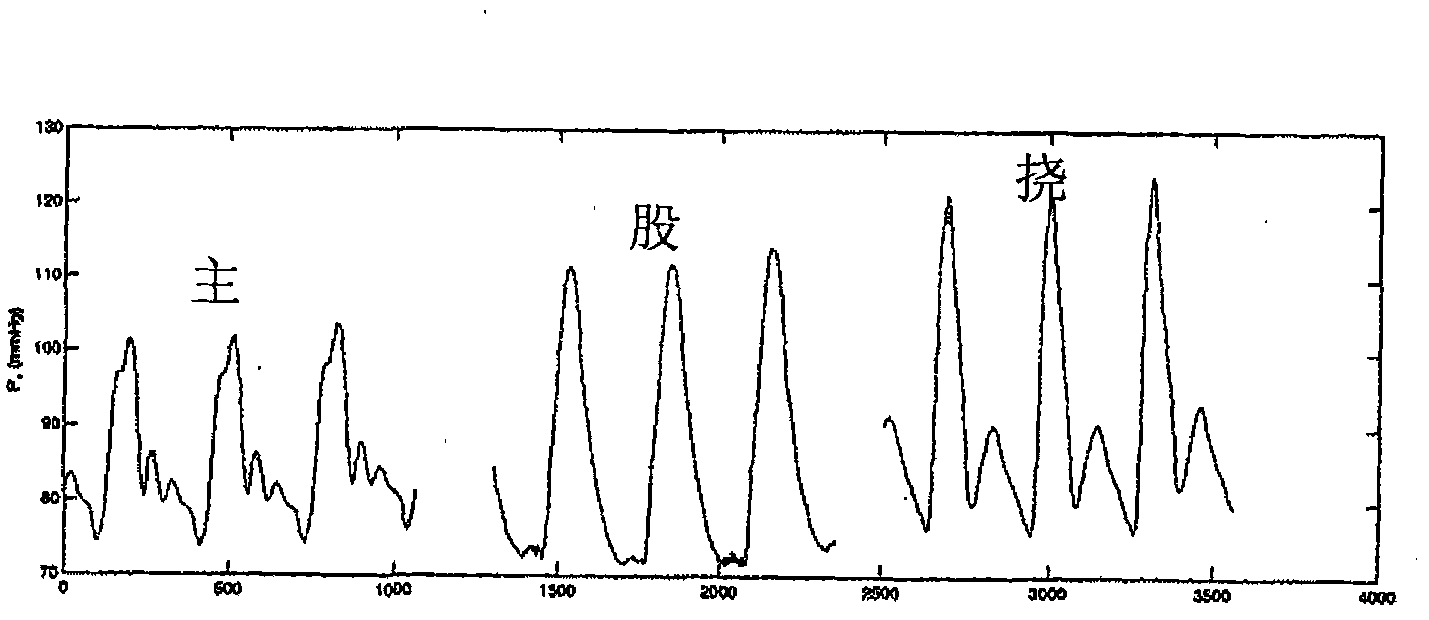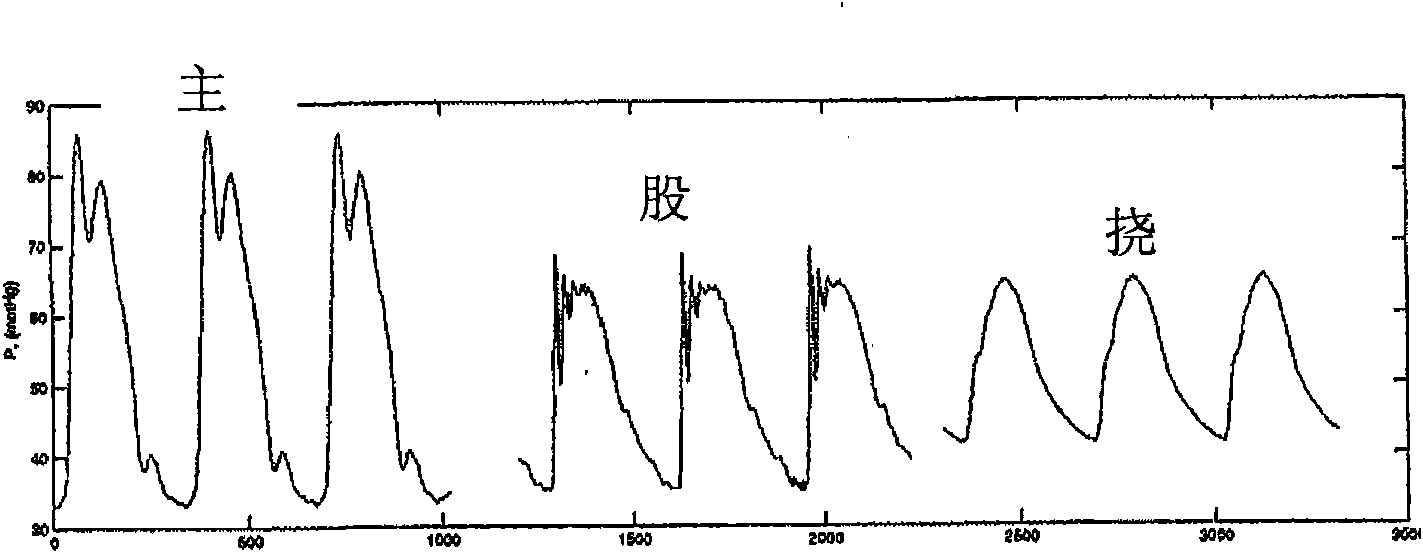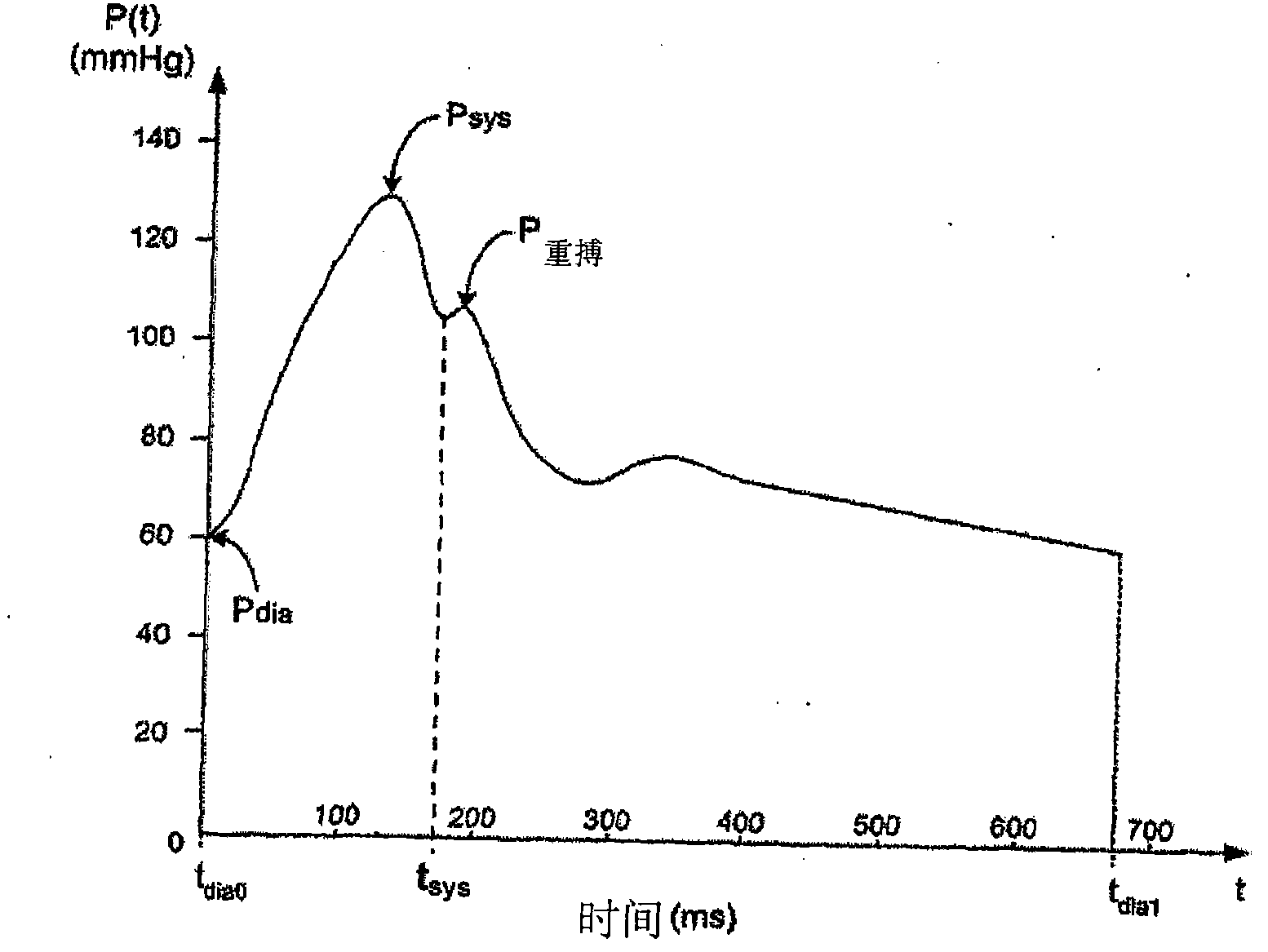Real-time detection of vascular conditions of a subject using arterial pressure waveform analysis
A technology for detecting objects and arterial blood pressure, applied in vascular assessment, cardiac catheterization, medical simulation, etc., can solve problems such as inability to obtain central aortic pressure signals
- Summary
- Abstract
- Description
- Claims
- Application Information
AI Technical Summary
Problems solved by technology
Method used
Image
Examples
Embodiment Construction
[0018] The present invention describes a method of detecting the state of a subject's blood vessels. The vascular states may include different cardiovascular hemodynamic states and conditions such as, for example, vasodilation, vasoconstriction, peripheral pressure / flow decoupling, states where peripheral arterial pressure is not proportional to central aortic pressure, and The state in which peripheral arterial pressure is lower than central aortic pressure. As used herein, the term vasodilation means the state of arterial and peripheral arterial pressure and flow decoupling from central aortic pressure and flow, and the term peripheral arterial is intended to refer to arteries positioned away from the heart, such as the radial, femoral, or brachial arteries artery. Decoupled arterial pressure means that the normal relationship between arterial, peripheral arterial, and central pressure is not correct, and arterial and peripheral arterial pressure cannot be used to determine...
PUM
 Login to View More
Login to View More Abstract
Description
Claims
Application Information
 Login to View More
Login to View More - R&D
- Intellectual Property
- Life Sciences
- Materials
- Tech Scout
- Unparalleled Data Quality
- Higher Quality Content
- 60% Fewer Hallucinations
Browse by: Latest US Patents, China's latest patents, Technical Efficacy Thesaurus, Application Domain, Technology Topic, Popular Technical Reports.
© 2025 PatSnap. All rights reserved.Legal|Privacy policy|Modern Slavery Act Transparency Statement|Sitemap|About US| Contact US: help@patsnap.com



